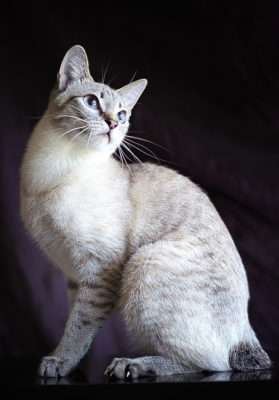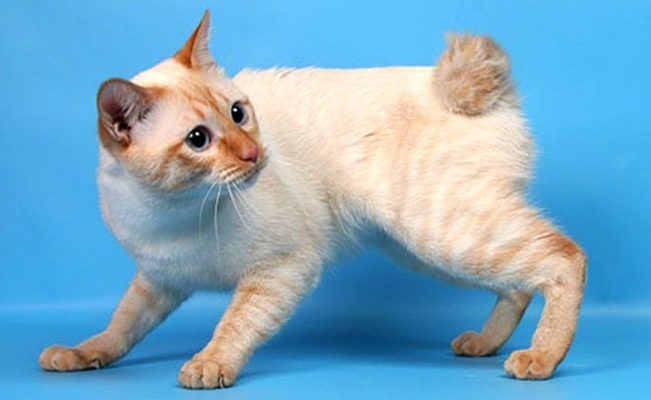Mekong Bobtail
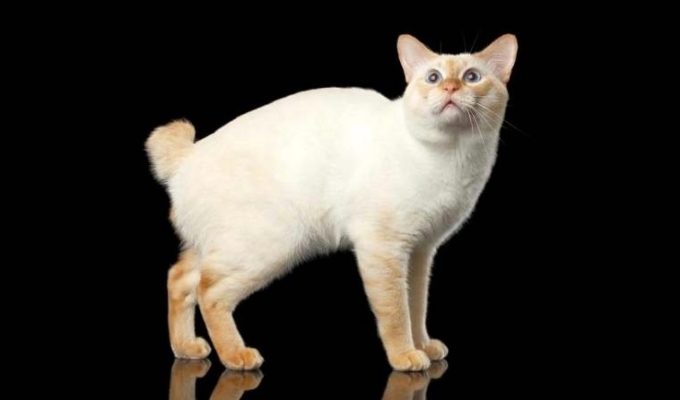
Its canine character distinguishes the Mekong Bobtail. It is the most loyal pet to its owner. It will follow you everywhere, sleeping in your bed. Bobtail is a friendly and reserved cat. It will never scratch you, except for a slight bite if you hurt it. Therefore, you can safely take this cat to a family where there are children.
Table of Contents
Breed Information
| Origin | Thailand |
| Size | 27-30 cm |
| Weight | Males 4-4,5 kg Females 2.5-3.5 kg |
| Fur Type | Short-haired |
| Color | Sil-point, tortoiseshell, chocolate, tabby |
| Lifestyle | Outdoors, indoors |
| Lifespan | 18-25 years |
| FIFe Classification | – |
| WCF Classification | Group 4: “Siamese Oriental Shorthair” Breed designation – MBT |
| TICA Classification | – |
| Group | Short-haired cats, cats for kids, rare cats |
| Price | $200-800 |
Breed Photos
Origin History
The breed first appeared in Thailand around the 19th century. It got its name after the Mekong River. However, this name began to apply only in 2003. Before that, the cat was called Siamese or Thai. One of the first descriptions of the breed was made by Charles Darwin in 1883.
In its homeland, the animal was considered royal. Cats lived in temples and palaces. Outside Thailand, bobtails were exported only as gifts to other monarchs. So in 1883, the cat came to Europe, and a decade later – to America. For a long time, the bobtail was considered a variety of Siamese cats, and short-tailed specimens were rejected. Purposeful selection only began in the XX century. The World Cat Federation recognized the breed in 2004.
Appearance
This breed has a pronounced sexual dimorphism. A characteristic feature of the bobtail is a short tail. The body of the cat is muscular, rectangular. The back is straight; the legs are slender, medium height.
The pet’s head is round, with a medium-length muzzle. Chin strong, cheekbones high. The eyes are large, oval. The only blue color is allowed. Large ears of the cat with rounded tips tilted forward. The coat is short and shiny; the undercoat is weak. The classic colors: Strong Point and Siamese.
Character
Its canine character distinguishes the Mekong Bobtail. It is the most loyal pet to its owner. It will follow you everywhere, sleeping in your bed. Bobtail is a friendly and reserved cat. It will never scratch you, except for a slight bite if you hurt it. Therefore, you can safely take this cat to a family where there are children.
The Mekong Bobtail gets along well with other animals. The exception will be rodents, fish, and birds. At their sight, the cat awakens a very strong hunting instinct. The pet of this breed adapts well to journeys by transport. But the solitude of the bobtail poorly tolerates. Therefore, do not leave the pet for a long time.
Care
The Mekong Bobtail is unpretentious in its care. It has a short coat with a weak undercoat. A weekly combing with a soft brush will be enough. Pet shedding is not strong. You should not bathe your cat more than once a month. This procedure can be replaced by wiping with wet wipes.
The eyes of a bobtail require daily wiping. The ears should be brushed every week. Brushing the cat’s teeth every day, or at least three times a week, is desirable. Do not forget to trim claws periodically and buy him a scratching post.
Education
Representatives of this breed are intellectually developed and obedient. It is not a problem to train a bobtail to the litter box. Training a cat is not difficult. The intelligent pet understands what is required of him. He’ll respond to dog commands like fetch and bring you things. Start training your cat early so he won’t have any problems. During training, don’t raise your voice or raise your hand at the cat. If you do, he will see you as the enemy.
Common Diseases
The Mekong Bobtail has real longevity. With proper care, a healthy cat will live for 20-25 years. The oldest member of the breed was 38 years old. Bobtails can have the following diseases:
- gingivitis;
- rhinotracheitis;
- chlamydia;
- microsporia;
- caliciviruses.
Older cats are sometimes diagnosed with arthritis or kidney failure. It is important to have your cat vaccinated and dewormed. Also, check-in with your veterinarian regularly.
Nutrition
In terms of nutrition, the Mekong Bobtails are unpretentious. They can be fed both natural food and dry food. The latter are useful and practical. They not only contain vitamins and minerals but also prevent the appearance of tartar. Cats of this breed are not prone to obesity. Feed them twice a week.
The pet’s diet should be balanced. The basis of the diet ideally consists of meals containing proteins. Lean meat and dairy products are suitable. Vegetables and cereals should account for about 15 to 20 percent. Once a week, give your cat eggs or fish. Exclude milk, liver, pork, cabbage, beet, cod, and pollock, food “from the table” from the bobtail’s diet.
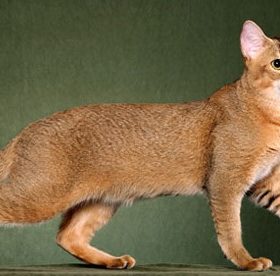 Chausie
Chausie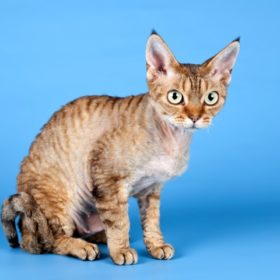 Devon Rex
Devon Rex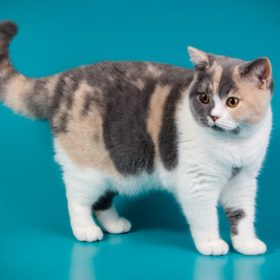 British Shorthair
British Shorthair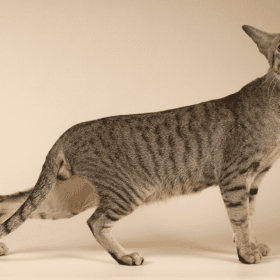 Oriental Shorthair
Oriental Shorthair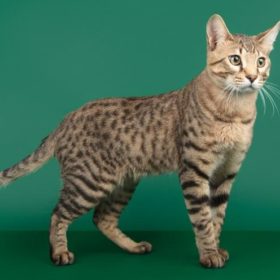 Serengeti
Serengeti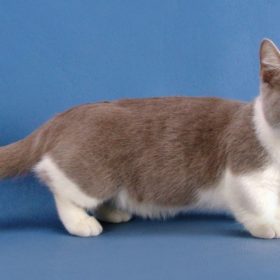 Munchkin Shorthair
Munchkin Shorthair
